Dying in America.
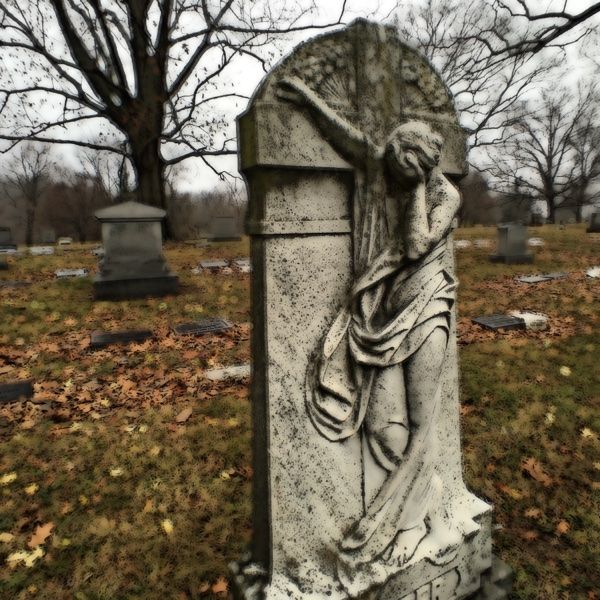
Every culture has its death traditions. Since the US is a melting pot, our traditions vary greatly. Some are based on how people were buried in the Old Country, while others are uniquely American. You may recall that the big reasons colonists revolted in 1776 was over taxes and the right to own land. Land ownership and availability played a big role in shaping how we bury our dead and the preservation of graves hundreds to thousands of years later.
Mounds: America’s oldest surviving tombs.
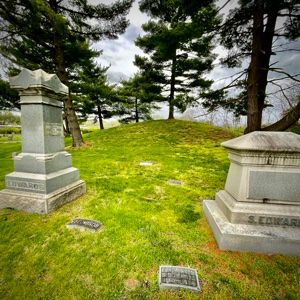
The surviving burial mounds of indigenous dignitaries indicate the practice of mounding earth over the deceased dates back two or three millennia. In the Mississippi and Ohio Valleys these mounds range from a few feet high to the 100-foot-high Monks Mound in Illinois (the size of the Great Pyramid). Monks Mound gets it’s name from French missionaries who disrespectfully built a chapel on top of it.
As with most burial traditions throughout time, the deceased of the Mound Builders were buried with things they might need in the next world, like weapons, pipes, jewelry and ornate constumes. Even today we still bury our dead in their finest clothes, sometimes adorned with jewelry.
By the time Columbus had stumbled onto the Caribbean, the tribes that built these mounds were gone. The tribes that inhabited the area had respectfully left them alone. Settlers destroyed most burial mounds to make way for cities and farms. We’re fortunate that some cemeteries like Flag Spring in Ohio, Shannon Methodist in Kentucky and Riverview in Indiana incorporated existing mounds into their cemeteries. Grave desecration laws of the newer burials have helped keep these mounds off limits for excavation and desecration.
The real estate of death.

After the Revolutionary War, soldiers were rewarded with land to the West. As a result, cities sprouted up with available space on the outskirts for graveyards. Following the tradition in Europe, many graveyards are next to a church. In larger cities, where death provided an posthumous income stream for the church, graveyards were often exclusively connected to a religion such as Catholicism, Protestantism or Judaism. Not surprisingly, cemeteries were extremely segregated. For example, the German Catholics were buried in a different section or a different cemetery than the Irish Catholics. At the same time, white Protestants were many times buried in the same cemeteries as African-American Protestants, but in separate—but usually not equal—sections.
But there was enough death to go around, so private cemeteries also became popular especially for more secular burials. Fraternal orders established their own graveyards, and many of these were open to anyone.
In Europe, where space is at a premium and land is often owned by the gentry, many burial plots to this day are rented for 10 to 30 years. Afterward the bones are tossed into a communal grave, or in some countries, stored in what look like olive oil tins. But in the US, “permanent” burial seems to have become somewhat of a God-given right. Laws vary by state, but permanent can mean 80 years (or after the kids that buried you are buried) to hundreds of years. But even this is influenced by value of the land since cities and towns die too. If the local economy goes through a downturn, the value of all area land goes down, people move on and eventually die elsewhere. Cemeteries, in locales that have fallen on hard times, often are neglected, but left standing.
The family plot: Together in death.
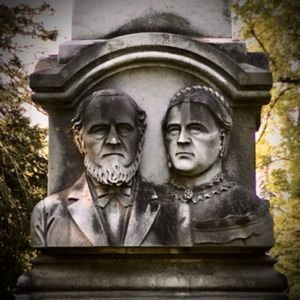
In Europe, people were born or married into upper society. But in the US in the 1800s, society positions were often based on freshly-earned money. The newly-wealthy here could afford to buy a family plot for the husband, wife, kids and in-laws. A bigger family and a bigger family plot were signs of the affluence you wielded locally. There was much prestige in being buried with rich in-laws. While many families could afford mausoleums, they had a very finite space. in 1850 the average family had six to nine kids. Family plots created a “more the”—well, not exactly merrier—but larger space to accommodate extended families. Family plots often had a large monument and simpler gravestones.
You may notice that even in old family plots, some of the graves are never used. This can be due to rifts and marital allegiances that put the family members in the ground elsewhere or because it was no longer important to be buried near grandpa. It’s estimated that there are 1 million purchased plots in American cemeteries that won’t ever be used. Family plots worked out to be a great real estate deal for the cemetery or church, since they got their money up front.
Brothers in arms. Sisters in faith.
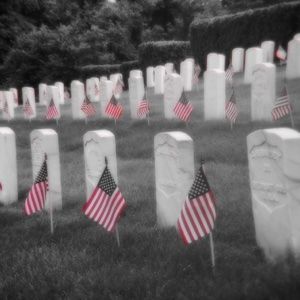
Though people are often buried with family, there are a few exceptions who get buried with their own based on vocation: specifically soldiers and nuns. Arlington National Cemetery in Virginia has the largest number of military burials in the world at 400,000, but not all are men or military. Many women of the military and spouses can be buried there as well. Curiously the first person buried on the grounds was a woman: Robert E Lee’s wife’s cousin, author Mary Randolph, was buried near the mansion in 1828. Contrary to urban legend, Lee never owned the estate. The first Military burial there was in 1864.
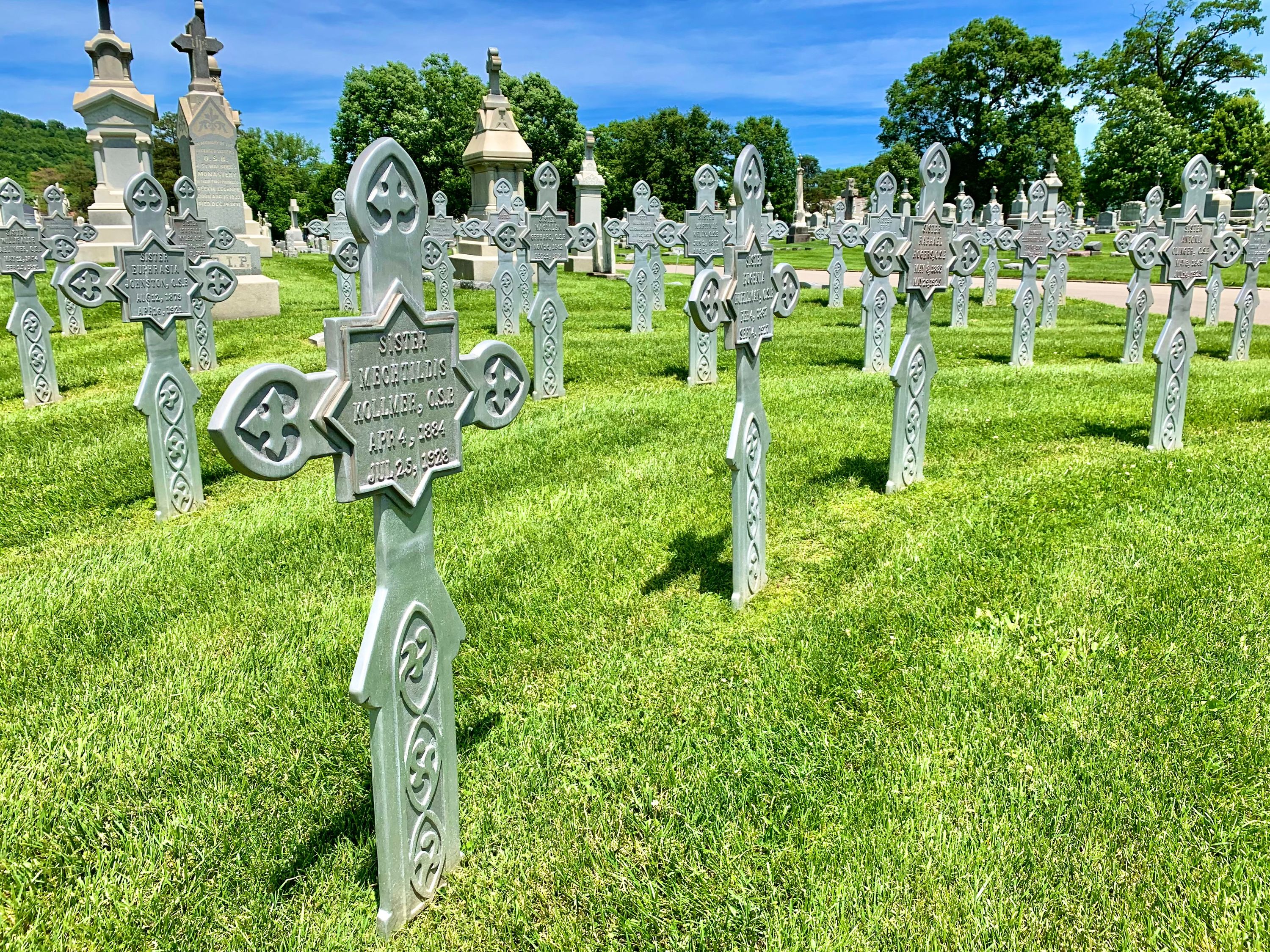
In a male-dominated religion in a male-dominated world, nuns don’t get their due. Despite their being more female saints that male from America, the sisters are often treated truly as paupers at death. It’s probably not surprising that nuns, who have traditionally provided service in numbers, are often buried with the rest of their order.
Our spooky stones.
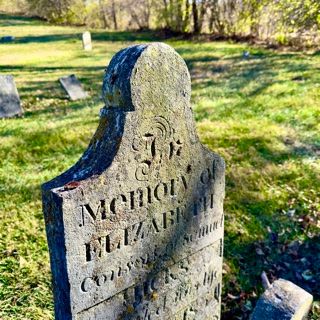
Dutchman John Zuricher is given credit as America’s first noted and prolific tombstone carver in New York and New Jersey in the 1700s. His distinct font was popular with the Dutch, then Germans and English of means all over the colonies. Winged skulls were at the top of many of his stones, but these gave way to winged cherubs. By the late 1700s, his stones were copied well beyond the colonies and for the next hundred years his font inspired carvers across the growing country.
Iconography of death.

Over the years gravestones symbols have changed. About 1850, there was a shift from weeping willows, flying cherubs, urns, bibles and fingers pointing Heavenward—to symbols of social allegiances, namely fraternal society markings. Who you worshipped was losing its importance to who you were connected to. You’ll find a visual glossary that demystifies mystical tombstone symbols here
Fraternal societies: The rise of death benefits.

Fraternal societies have played a huge role in death in the US, from the compass you see on the graves of Mason and from the Odd Fellows to the founding hundreds of cemeteries. The Masons and Odd Fellows migrated from England. But many more were born in the US and usually based on providing a decent burial for members. In this respect, many of these societies served the roles of insurance companies. The Woodmen of the World, Modern Woodmen of the America and Knights of Columbus all still have their own insurance companies today.
What’s curious in the US is that, allegiance wasn’t required to any one society. The easy way to establish yourself was to join a fraternal organization. Or two. Or three. The more you joined, the more brethren you had that could offer jobs and help increase your standing in the community. You’ll commonly see symbols of multiple societies on the same gravestone in the US. It’s estimated that by 1900 20% of American men of every ethnic background and race were members of a secret society. There’s more on burial within secret societies.
Zinc tombstones: Good-old American ingenuity in death.

Tombstones were not exempt from the effects of the industrial age. In the 1870s, the Monumental Bronze Company of Connecticut turned tombstone production into a manufacturing business with their white bronze monuments. These cast zinc markers and statues were more elaborate and cheaper than carved marble, and weathered better as well. They can be spotted today by their distinct blue patina. Lightly tap on one and they clang. There are more examples of the monuments here
Adolph Strauch and the US Garden Cemetery.

Around 1850, Europe was swept up in the Garden Cemetery Movement, sometimes called the Rural Cemetery Movement. Burial grounds like Pere LaChaise in Paris and Highgate in London were made to look like parks with extensive landscaping as part of their motif. The small, regimented rectangles of the plots were expanded into large flowing shapes guided by trees, lakes and curving paths. These were really our first public parks. It’s said Bram Stoker got the idea Dracula by observing a family picnicing at the grave of their ancestor in Highgate. (At least, that’s what our guide Nigel told us.)
Adolph Strauch, a Prussian immigrant who learned his craft apprenticing under gardeners at the Hapsburg estates, became America’s cemetery architect, designing Oak Woods near Chicago, Woodmere in Detroit, Homewood in Pittsburgh, Forest Lawn in Buffalo, Lake View in Cleveland, Lakewood in Minneapolis, Spring Grove in Cincinnati, Greenwood in Hamilton, Ohio, as well United American in Cincinnati, the oldest African-American cemetery in Ohio.
With the ample real estate in the US, Strauch saw that the Garden Movement could be realized here like nowhere else. Expansive landscapes could meld with huge plots that the nouveau riche could afford. Cemeteries like the 478-acre Green-Wood in Brooklyn and 733-acre Spring Grove in Cincinnati dwarf the 37-acre Highgate and 110-acre Pere LaChaise with an orchestrated flora that makes these cemeteries still a spectacle today.
Relocation: Moving on up.
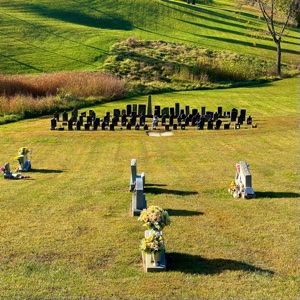
It’s not uncommon to find graves with death dates going back before the cemetery was founded. While sometimes new cemeteries incorporated existing cemeteries, it was common for graves to be moved after death. Again, land played a role. If there location of the old cemetery became premium real estate, it wasn’t uncommon for the interred to be moved to cheaper pastures. It could also be that a new family fortune made an upgrade possible and moved the coffin to a more ritzy cemetery.
Is death a thing of the past?
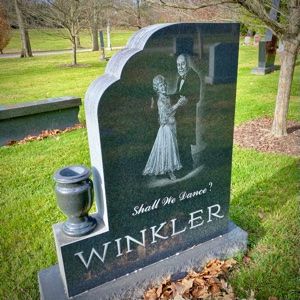
Over the past 70 years, we’ve seeing dramatic changes in what we do with our dead in America:
- Cremation is on fire. It’s estimated that by 2035 80% of us will be cremated when we die. The high costs at funerals and cemetery plots are to blame for this trend. More people now scatter the ashes or loved ones to the wind or inter them in public mausoleums or other cheaper accommodations.
- Stones are less elaborate. Cemeteries are pushing flat markers that are flush to the ground. The military authorized these for burials in 1948. It’s not so much that they save the family money, but save the cemetery money, since mowing costs are substantially reduced over the years. Modern cemeteries where all the stones are flat markers look like more like yards and less like graveyards.
- Geology of stones has changed. Early gravestones in the US were made of a brown sandstone, most from quarries near Portland Connecticut. Some of these have weathered remarkably well. Then came marble, limestone and markers of the less well-off in cement. All have a similar composition, but weather poorly in acid rain. As a result many of our limestone markers are unreadable after 100 years. Today granite is the most common stone. It’s resistant to the effects of acid rain, but not impervious.
- Carving is giving way to technology. Hand chiseling is out, with sand blasting now used to carve letters and numbers in headstones. Photos on headstones are also common now through laser engraving on granite. This is a similar process to a dot matrix printer.
- Symbols of group and religious affiliation are giving way to personal interests. You’ll still see plenty of crosses and compasses, but many newer stones of size portray hobbies, like fishing, cars, guitars and even favorite cartoon characters.
- Statues aren’t so common. The industrial age brought enough affluence that many Americans could afford statues on their graves. These were hand carved in marble (sometimes by noted sculptors) of the deceased, angels, etc. There are fewer new statues on graves and these are often smaller and mass-produced. Bronze was popular for funerary statues at the turn of 1900, but today you’re more likely to see a molded cement statue that might be identically to another one in the same cemetery.
The future of American death.
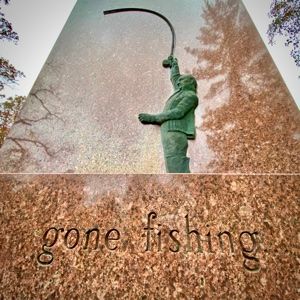
Death is just not as important as it once was. Sadly, our newer American cemeteries are looking much less majestic than those built over 100 years ago. Now commonly called gardens of peace, pricey cemeteries seem extremely vanilla with their indistinct flat stones and occasional prayer spots with a statue of St. Somebody protruding the flatness. But as part of the homogenization of America, maybe this helps remove the spookiness and take away some of the stigma of death.

In closing, here are Sponge Bob tombstones of twin sisters in the military. These caused some controversy with the cemetery about the lighthearted nature of monuments and the spot becoming a tourist attraction. The matter was settled with granite slabs placed behind the stones so they were less visible from the road while still respecting the family’s wishes.
More articles:
- Speak of the dead: a visual glossary of tombstone symbols
- Burial secrets of the not-so-secret societies.
- White Bronze: Tombstones of technological wonder
Like what you’re reading? Consider buying me a coffee below for more content like this.
